- Jul 7, 2021
How to Catch Crappie at Night
Beyond helping you beat the heat and the crowds, summer night crappie fishing provides dependable action. Here’s what you need to know.
Seeing a few minnows in a pier light, you know it won’t be long. Soon more plentiful minnows will become part of the scene, and the dark shadows of crappie will start showing up. If all goes according to plan, the crappie catching action will soon kick into gear.
Night fishing for crappie has definite advantages through mid-summer. Two obvious advantages are an escape from the heat of the day and the chance to avoid crowds of pleasure boaters and other anglers. Fishing is about trying to catch fish, though, and the most important advantages of summer night crappie fishing are that fish tend to be congregated and cooperative, and the patterns are predictable.
Crappie are active at night, moving shallower than at other times and actively seeking food. They feed opportunistically on concentrations of forage, which is central why summer night fishing tends to be predictable.
Lights shining on the water at night often begin a process that congregates active crappie. Phytoplankton moves toward the light, followed by plankton, aquatic insects and minnows, and eventually crappie. For the crappie it’s a doubly good scenario because forage congregates, and they can hold in great ambush positions along the edges of the light or beneath the baitfish. That’s over-simplified science but the gist of what occurs.
The result is an ideal scenario for fishermen, with plentiful crappie feeding in highly lit areas that even can be created on the spot during your outing.
Finding Fish
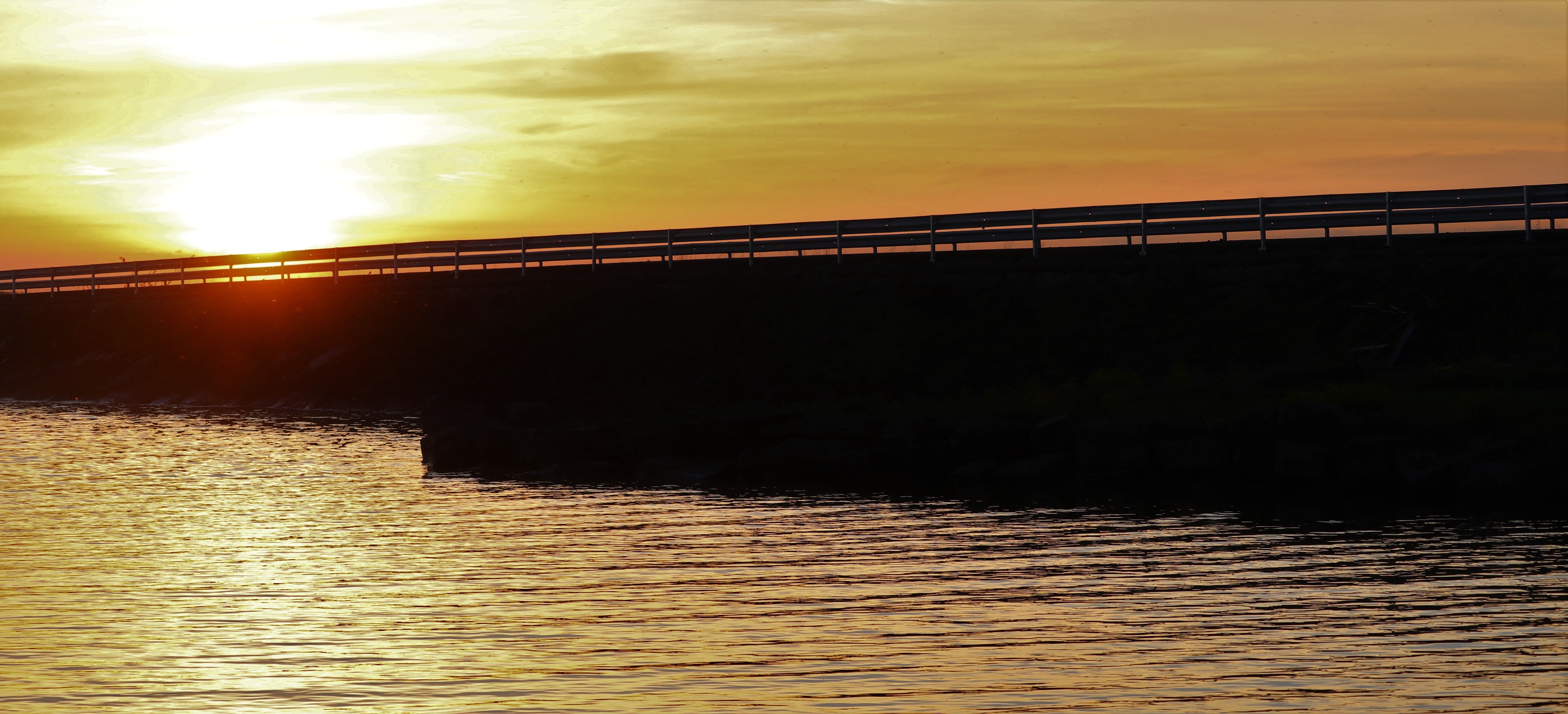

For starters, illuminated water is central. While crappie certainly can be caught in the dark and other summer night strategies exist, the easy and predictable summer night fishing we’re talking about begins with areas of illuminated water.
Beyond light, the other important consideration for summer night fishing is where those fish would be by day this time of year. During summer, that often means main bodies of lakes and lower halves of major creeks, often in the vicinity of channel edges. Having a good range of depths is also beneficial so fish can move deeper during the day.
Bridges are among the best specific areas for nighttime crappie because they create funnels that center on a creek channel with plentiful structure from bridge pillars, supports and riprap at the ends. Other dependably good areas are docks near channel edges, the deep ends of flooded timber stands and the tops of major points with deep water nearby.
Light Sources
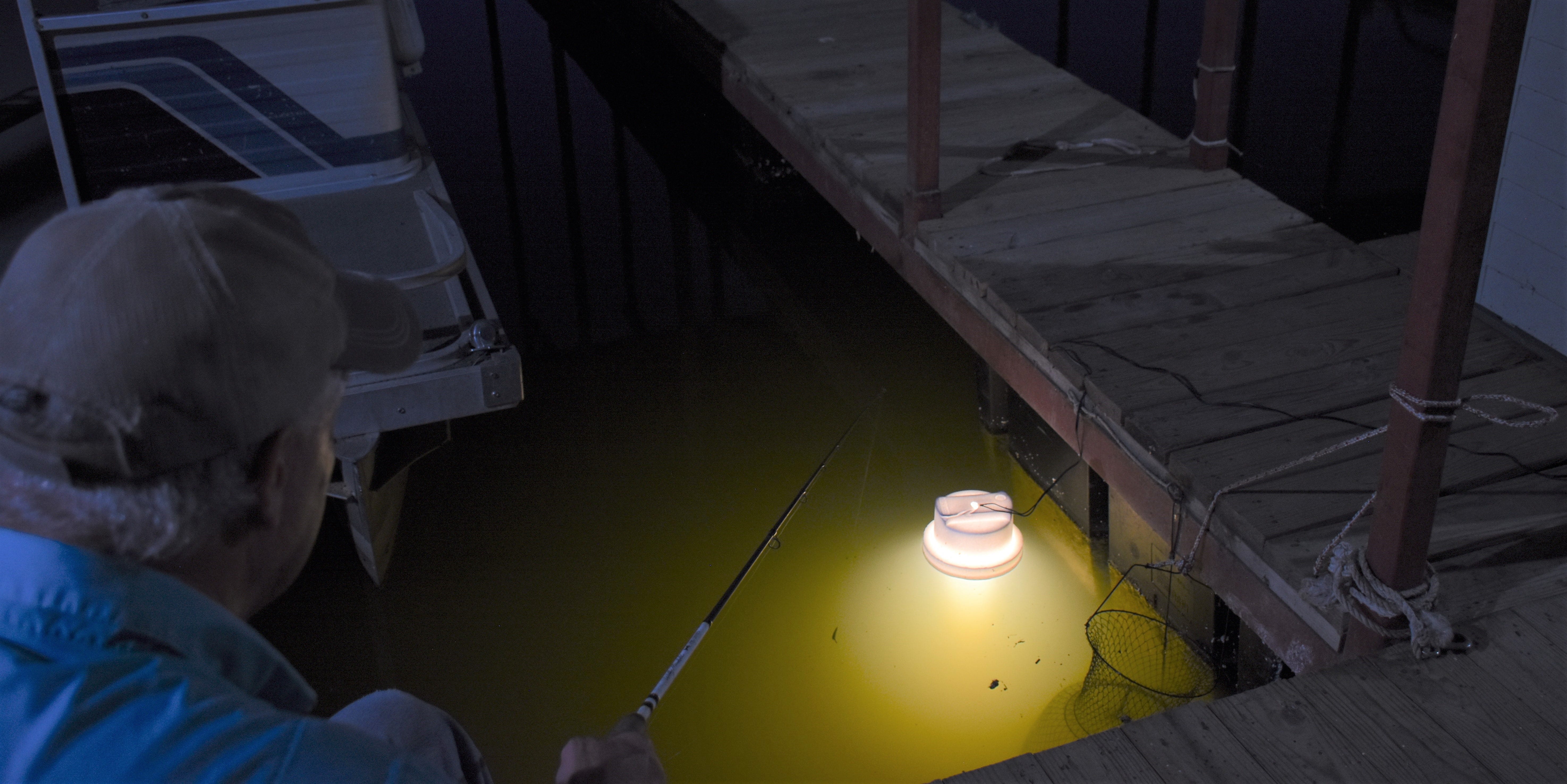

Lights for summer night fishing fit into two major categories: Light sources that already exist and lights that you add.
Beyond the obvious advantage of not having to own something, tote it to the lake and set it up, existing lights that come on every night provide consistency, and resident fish learn to look for food in those areas. Lights you bring to the lake, on the other hand, open far more waters to fish and allow you to concentrate fish from a broader area, such as water under a bridge or along a brush-lined channel edge.
In terms of existing lights, look around parks or roads with streetlights near the water, lit bridges, fishing piers, homeowners’ docks, marinas and power plants. Anyplace that has crappie habitat nearby and that gets lit up decently at night is likely to hold insects, minnows and crappie on summer nights. Just beware of “no fishing” zones that sometimes exist around marinas or other areas with restricted access.
Lights you bring for crappie fishing come in many shapes, sizes and price ranges: from the classic lantern hanging over the water to a headlight type light in a foam housing to submersible waterproof LED lights that suspend to shine light in all directions. Some run on flashlight batteries and are highly portable. Others require something heavier, like a car battery. The most important thing is to get a light into position and then leave it alone to allow time for the whole plankton/forage/gamefish process to occur.
Night Crappie Techniques
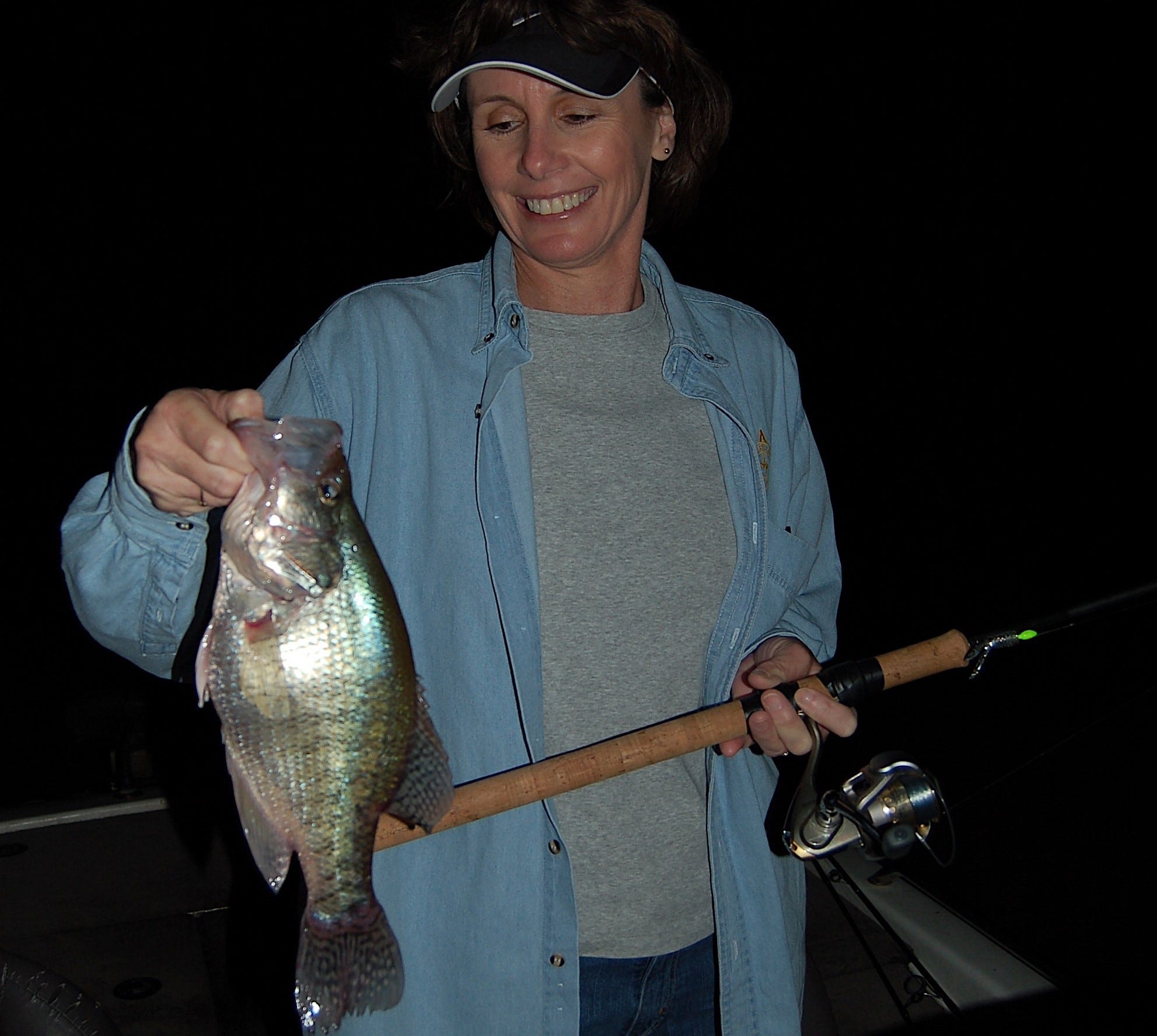

Crappie jigs and minnows are the most common baits, but a supply of minnows can often be hard to obtain at dusk and even harder to keep alive in the summertime temps. Soft-plastic crappie baits, on the other hand, can add to the fishing fun because you’re constantly providing the action – casting, jigging, pitching – and covering more water. Crappie are on the move at night, so the fishing jigs scenario is an especially good match.
Because most night fishing for crappie involves lights and concentrated fish, your being stationary is a good approach. Casting a Stroll’R or Hyper Grub and swimming it through a lit area or along the edges of the light allows you to work the entire area and fish a range of depths. Casting and retrieving also works extra well if the fish are in a chasing mode.
If you’re over the fish, whether fishing from a boat or on a dock, vertical jigging a Baby Shad or Slab Slay’R helps you slow the presentation to coax strikes. It also allows you to control the depth and work a specific zone and to fish a very specific spot. Fish commonly hold at the edge of the light, on the dark side, so working a jig barely within the cone of light puts your bait right where the crappie are apt to be looking for food.
An in-between approach that offers some of the benefits of casting and jigging is to make a short pitch across the lit area, close the spinning reel’s bail and allow the bait to pendulum down. Most fish will hit on the drop, but it’s worth holding the bait stationary for a minute or two or jigging it a bit when it’s in place and then lifting it slowly. Some crappie will hit as soon as you start lifting the bait, thinking it is getting away. Make note of the depth and the presentation generating the bites, as repeating both often delivers continued success.
A final approach that can be very effective at night is to suspend a jig under a float and cast to the edges of the light. This allows for very precise depth control without need for the bait to be beneath the rod tip and lets you place the offering right where you want it. If there’s a bit of ripple on the water, you don’t need to work the bait. If the surface is flat, twitch the rod tip from time to time, moving it just enough to rock the float and make the bait dance.
Enhanced Visibility
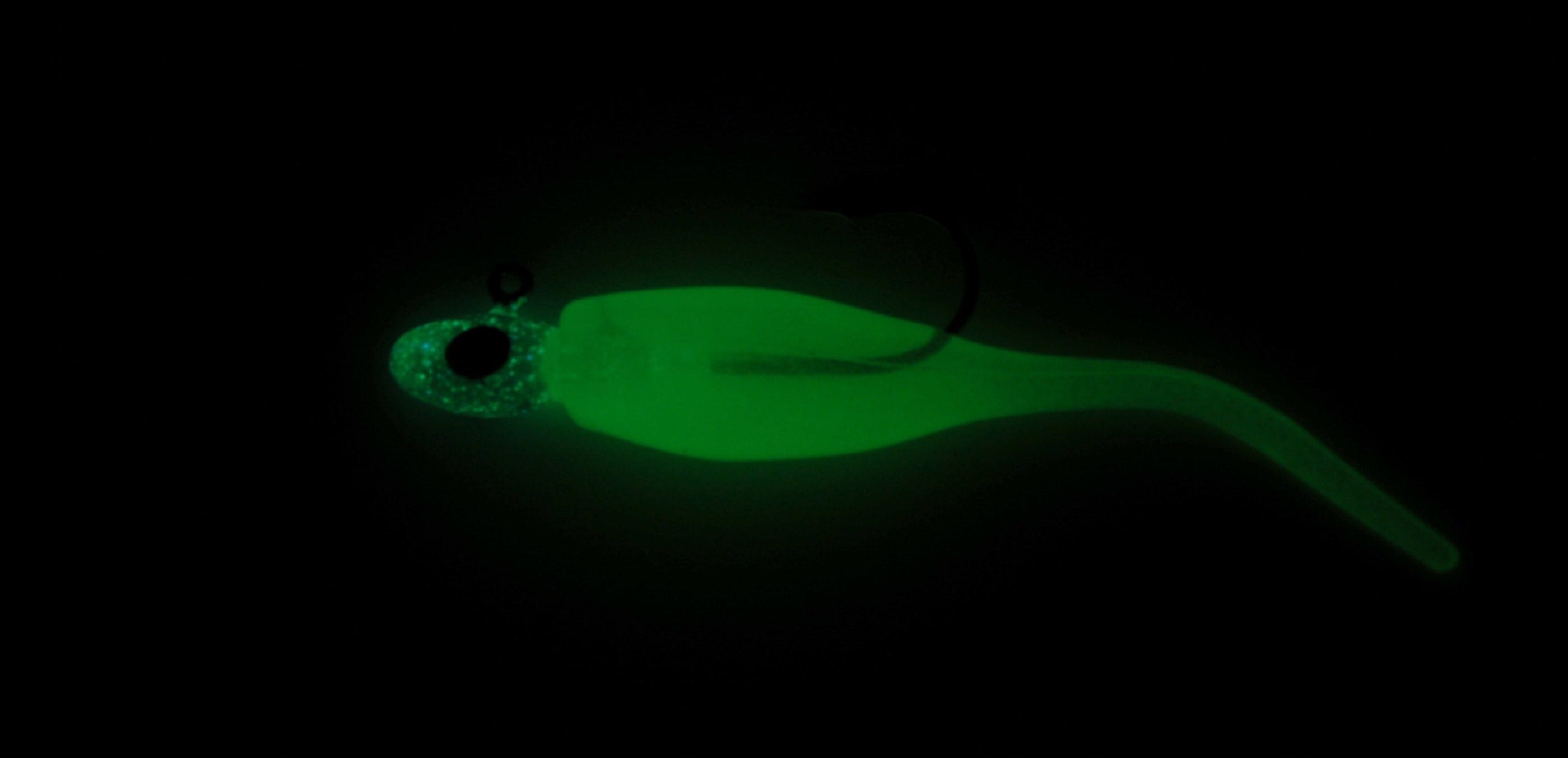

An excellent way to enhance lure visibility for the nighttime approach and trigger extra strikes is by using glow-in-dark baits. Crappie Pro Mo’ Glo Jigheads, as the name suggest, are all painted with glow colors, and Bobby Garland Stroll’Rs, Baby Shads, Slab Slay’Rs and Scent Wiggl’Rs are all available in Mo’ Glo glow-in-the-dark colors.
If you want to use other baits or colors or if you don’t have the Mo’ Glo colors, Bobby Garland Mo’ Glo Slab Jam adds a glow-in-the-dark coating (and a minnow scent) to any crappie bait. Along with being more visible to the fish, Mo’ Glo heads and baits make offerings move visible to you in the dark water, which can be beneficial for controlling presentations.
Speaking of visibility to you, floats that light up, like Thill Splash Brite and Night Brite floats, can be extremely helpful for fishing along the outside edges of the lights.
Closely related to visibility, one more way to enhance your nighttime offerings is to insert a rattle. Bobby Garland makes glass Crappie Rattles that are sized to fit in crappie baits, pointed at the end for easy insertion and quite loud for their small size.
Bank on It
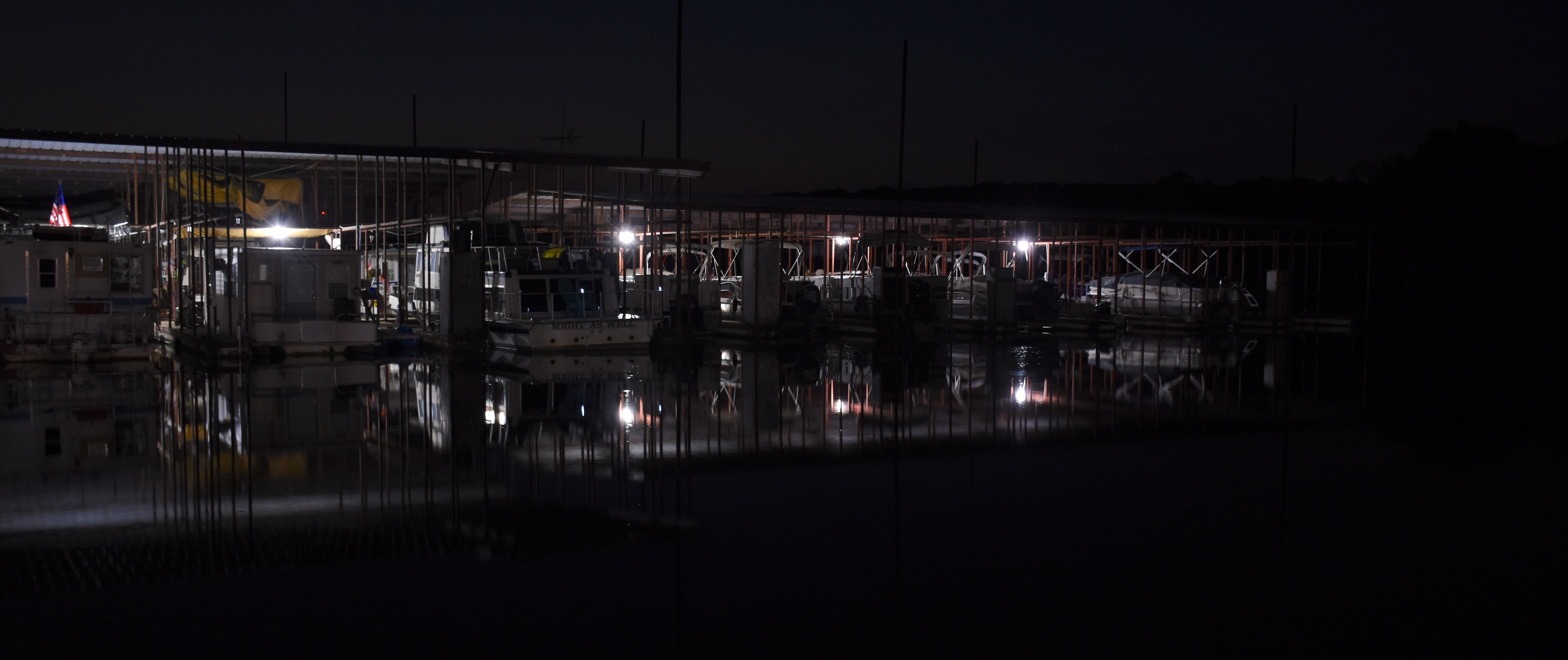

Something nice about night fishing for crappie is that you don’t need to own a boat to tap into good action. Some of the best areas are accessible by foot, and some are actually best fished by foot:
- Bridge ends – Often you can walk beneath a bridge, putting the riprap bank and first row of pillars or supports in easy casting range.
- Riprap Banks – Beyond the bridges themselves, the causeways at both ends commonly provide long areas of crappie cover that are accessible by foot. Riprap is also common near dams and on any point that needs protection from erosion. Concentrate on the side most protected from current.
- Piers – Don’t overlook fishing piers for night fishing, especially if they have lights. Even lights designed primarily to illuminate the pier itself commonly shed a band of light on the water.
- Private and public fishing docks - Both provide some of the best night prospects as crappie are already using the cover for shade during the day. Most already have lights overhead, and some already aimed at the water. Otherwise, it’s easy to set up a floating or submersible light to create your own night fishing spot. Often, corners closest to the most dock surface areas are best. Of course, having dock access permission is key, so always get that first and/or pay public dock fees as applicable.
Please visit Lurenet.com to stock up on nighttime crappie baits and tackle and for more how-to content.



